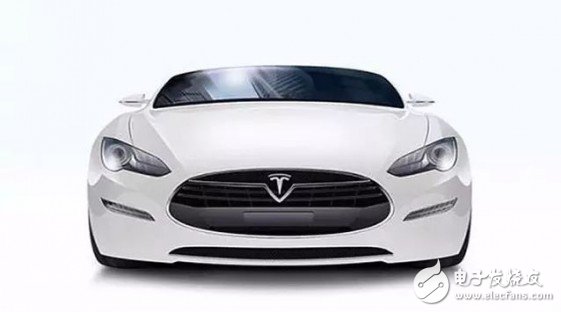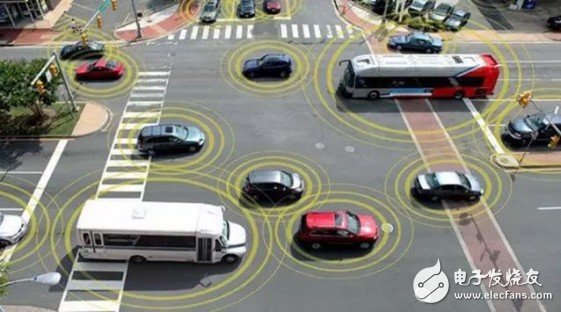Some people always ask, why do many investors now pay attention to driverless? After all, it seems that it is still far away.
I want to say, why not?
Nowadays, the travel market is undergoing tremendous changes: Uber, which seems to have no technical content, has become the top of the unicorn with a valuation of 62.5 billion US dollars. The global amnesty is eager to invest in express applications, the world is surging, Didi, Lyft standing on the capital The wave.
Someone thought about the root cause of the great change? In fact, it is a technological change - no driver. In the foreseeable future, it will not only subvert our existing travel habits. Moreover, it is likely to inspire 2 trillion new markets, bringing the entire travel market to 3 trillion.
unmanned? Autopilot?
How to define "A car decides to drive under certain conditions"? This has always been a topic of debate in the industry.
Previously, this has never been unified in business reports: from driverless, autonomous driving, assisted driving, to smart driving, advanced assisted driving, and so on.
Nowadays, the industry has finally unified their opinions. They believe that Google’s third-generation driverless cars represent “Driverless†and “Selfdriving†(unmanned driving). Its core feature is “to drive at all times and refuse to get involved in drivingâ€. .
The most famous case of "Autopilot" (Autopilot) is Tesla. The core of it is "the car can only make limited self-decision and does not have complete independent thinking and decision-making ability" - this is the high intelligence of Hawking. The wheelchair is more like.
At present, the industry has a higher recognition of the concept of autonomous driving, including automakers such as Mercedes-Benz and Nissan, chip makers such as Qualcomm, and component suppliers such as Delphi.

Unmanned progress is not as fast as you think
In the field of driverless vehicles, the United States, the United Kingdom, and Germany have introduced legal support at the national level and established relevant regulatory agencies; while China, Japan, France, and Sweden are in the stage of unmanned testing on closed roads.
The history of the development of American driverless cars can be equated with the history of Google's driverless cars.
As early as 2007, Google conducted a test of driverless cars on some closed country roads in the United States, including the Toyota Prius, which was later mass-produced.
In 2015, Google announced the third generation of driverless cars. Yes, the car that looks like a bread and looks cute, completely without a steering wheel and a wiper.
Google’s driverless car has been driving 2 million miles on the road, and there have been 15 accidents. Fortunately, there have been no casualties – because the driverless car itself has no one to ride.

Despite the early start, from the perspective of the technology industry, Google’s progress in driverless driving is not as fast as it might have been.
According to the latest news, Google, Ford, Uber, Lyft and Volvo have established the Alliance of Driverless Vehicles, which aims to "promote all aspects of the safety and social benefits of driverless cars" and is supported by the US National Highway Traffic. Former Secretary of the Security Administration (NHTSA) David? Strickland served as a consultant.
Many people's initial understanding of driverlessness comes from the release of the "Google X" project, which gives the impression that "the American driverless technology is higher than China and does not know where to go." But in fact, as early as 2000 or even earlier, China has begun to promote the development of driverless projects in the military and universities.
Both Beijing Institute of Technology and Tsinghua University have carried out related research and development projects. Domestic manufacturers such as BYD and Chery have also exposed their faces in small-scale unmanned races. However, these technologies have not been widely used in public view for various reasons.
At present, there is no commercial company in China that specializes in the development of driverless cars. More is to cut in from the road and driving data, and to do the accumulation of the underlying research and development.
From an investment perspective, some early US dollar funds have gradually begun to favor the basic investment of driverless technology itself. For example, the production of laser radar, camera, and research and development based on the combination of automotive and data algorithms like Google.

It can be seen that the entire driverless technology is still in the early stage, and it can even be said to be the "original period."
Yes, the speed of driverless technology is not as fast as imagined. The current application is only advanced driver assistance, such as Tesla and Mercedes-Benz automatic parking technology.
There are many problems with any kind of technology in the initial application. Although driverless technology can increase the driver's rest time, reduce car loss and save more time, there is no doubt that we are enjoying the benefits. At the same time, there must be some risk.
For example, since the application of driverless cars is still in a particularly early stage, the intelligence is not as good as the driver's own judgment, so no commercial organization is willing to pay for the accidents that may occur, which leads to the risk of unmanned driving. . The industry has been arguing about the issue three years ago, but I am afraid that there will be no conclusion in 2020.
What does Google’s driverless drive mean?
Some people like to pack Google and Tesla's driverless cars into sci-fi products, which are said to be a group of young and bloody billionaires to serve the other big multi-millionaire toys. I do not agree with this view.
The project leader of Google's driverless car once said that their vision is to serve people who can't enjoy private cars at the bottom of society.
In the United States, the average car usage is only 4%, and each car uses an average of 60 minutes per day. For this 4% usage rate, consumers have to bear a heavy burden. Vehicle trading, gasoline, insurance, these businesses have spawned many large companies, on the one hand they have formed strong barriers to interest, on the other hand they have lost their breakthrough.
He believes that if these companies sell cars, gasoline, and insurance today, there should be a brand new company to sell miles, travel times, and richer experiences tomorrow.
Google is now working with Uber, Lyft and other companies to create a new market while addressing policy and technical issues. Chunka, a long-time focus on the unmanned Forbes columnist, said the market is worth $3 trillion, but there are still 2 trillion people left to touch.
Need to admit that the business opportunities in the driverless industry are still relatively small. After two years with the industry, I found that the rhythm of new things in the driverless industry is indeed much slower than the Internet industry, so this is still a need for technology precipitation. And the field of continuous testing.
At the moment, what the driverless market needs most is hardware and software support based on the unmanned technology itself. In addition, companies like universities and labs are also critical, and the technical support they provide is as important as the brains of driverless technology. At present, some car companies have purchased plans and promoted experimental results.
The remaining 2 trillion market is more in need of our imagination. In addition to communication companies will get a lot of new opportunities, the ecology has many vacancies; car-to-vehicle communication, call center services, new insurance and claims methods are all worthy of our attention and imagination.

How does driverless change the travel market?
Just last week, Didi Travel merged with Uber China to establish a form of travel market giant. The reason why there is such a high valuation, I think it is inseparable from being able to reduce the cost of using the car.
In the course of using the car, 75% of the gallon of gasoline will be wasted. If anyone can improve the cost of the car through technical improvement, it will be very meaningful.
At present, autonomous driving technology has been providing new solutions to reduce energy consumption. For example, the automatic parking technology that can stop the car in a few seconds not only greatly improves the efficiency, but also reduces the energy consumption.
More than just energy consumption, many companies are thinking more about using cars. With the continuous advancement of driverless technology, more and more people will only want to travel, and do not want to have a car with high maintenance costs.
So we can see that GM is aiming at this market, using driverless technology to solve driver problems and standardizing passengers' car costs, thus completely changing the existing business model in the travel market. They invested in Lyft, acquired the driverless startup Cruise, and developed the electric car Bolt. And claimed that these cars are not used for sale, but are used in the Lyft team.
In addition to the cost-effectiveness of such things as energy and automobiles, the cost of using people in the future will become higher and higher, which means that the driver's intangible cost will be higher and higher; can drone reduce costs from this aspect? ? It is entirely possible.
Because you have to know that drone driving is not just about automatically driving a car, it contains the power to change the future.
KNLN6-63 Residual Current Circuit Breaker With Over Load Protection
KNLN6-63 TWO FUNCTION : MCB AND RCCB FUNCTIONS
leakage breaker is suitable for the leakage protection of the line of AC 50/60Hz, rated voltage single phase 240V, rated current up to 63A. When there is human electricity shock or if the leakage current of the line exceeds the prescribed value, it will automatically cut off the power within 0.1s to protect human safety and prevent the accident due to the current leakage.
leakage breaker can protect against overload and short-circuit. It can be used to protect the line from being overloaded and short-circuited as wellas infrequent changeover of the line in normal situation. It complies with standard of IEC/EN61009-1 and GB16917.1.
KNLN6-63 Residual Current Circuit Breaker,Residual Current Circuit Breaker with Over Load Protection 1p,Residual Current Circuit Breaker with Over Load Protection 2p
Wenzhou Korlen Electric Appliances Co., Ltd. , https://www.korlenelectric.com